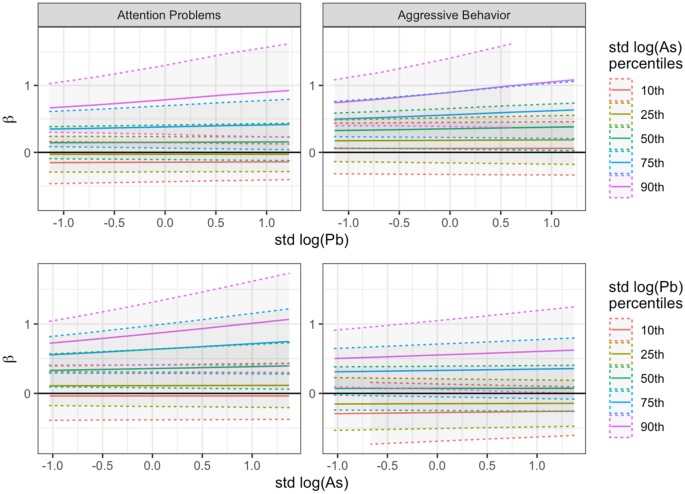
The effects of the exposure to neurotoxic elements on Italian schoolchildren behavior
- Select a language for the TTS:
- UK English Female
- UK English Male
- US English Female
- US English Male
- Australian Female
- Australian Male
- Language selected: (auto detect) - EN
Play all audios:

Neurodevelopmental disorders are constantly increasing on a global scale. Some elements like heavy metals are known to be neurotoxic. In this cross-sectional study we assessed the
neurobehavioral effect of the exposure to trace elements including lead, mercury, cadmium, manganese, arsenic and selenium and their interactions among 299 schoolchildren residing in the
heavily polluted Taranto area in Italy. Whole blood, urine and hair were collected for metal analyses, while the Child Behavior Checklist and the Social Responsiveness Scale, administered to
the main teacher and the mothers were considered to identify behavioral problems in children. Blood lead mainly influenced social problems, aggressive behavior, externalizing and total
problems. Urinary arsenic showed an impact on anxiety and depression, somatic problems, attention problems and rule breaking behavior. A significant interaction between lead and arsenic was
observed, with a synergistic effect of the two metals increasing the risk of attention problems, aggressive behavior, externalizing problems and total problems. Overall, we were able to test
that higher blood lead, urinary arsenic concentrations and their interaction increase the risk of neurobehavioral problems. This is in line with the U.S. Environmental Protection Agency’s
priority list of hazardous substances where arsenic and lead are ranked as first and second respectively.
In this study we assessed the neurobehavioral effect of the exposure to some elements including Pb, Hg, Cd, Mn, As and Se among 6–11 years old children residing in the heavily polluted
Taranto area in Italy considering the interactions among the elements that showed a significant association with the behavioral outcomes.
Table 1 shows the overall socio-demographic characteristics of participants, grouped also by the area of residence. Two of the neighborhoods closer to the industrial site (Tamburi and Paolo
VI) were characterized by a lower percentage of high-level socio-economic status (SES) (1.3% and 0% respectively, Chi-squared p-value
